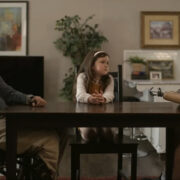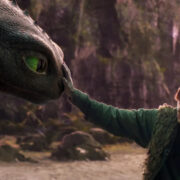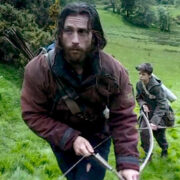Noah Hawley’s FARGO & The Gospel Of The Coen Brothers
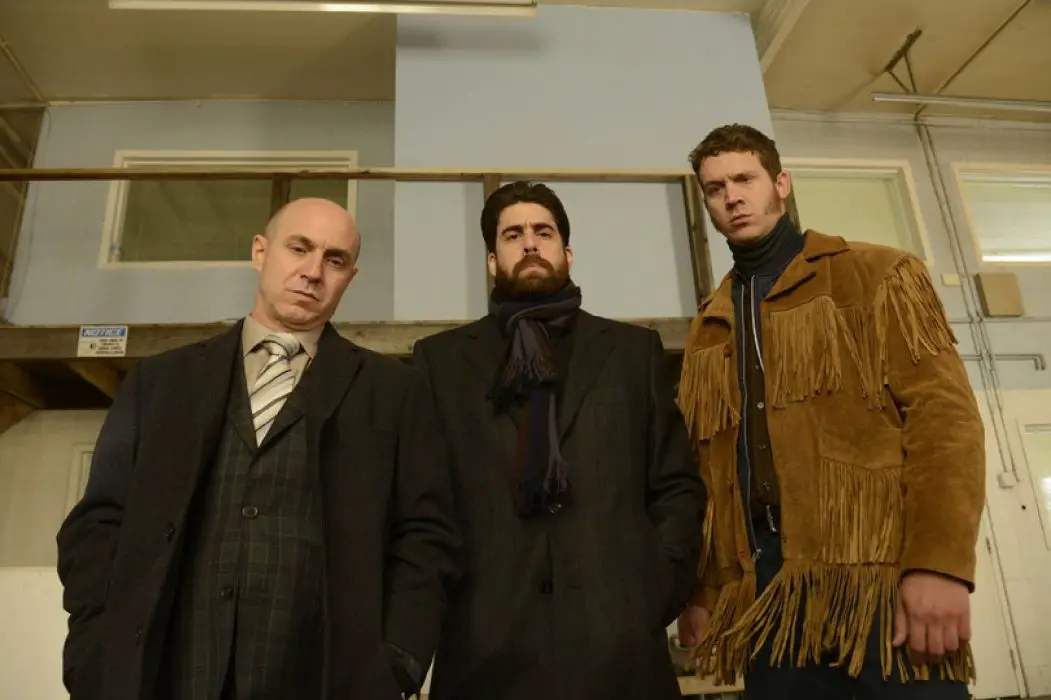
Chris is a 23 year old writer and filmmaker. A…
Film buffs everywhere had healthy scepticism when FX announced a Fargo television show. The classic 1996 film by Joel and Ethan Coen, that blends the genres of dark comedy and crime, is sacred ground for many. A television adaptation of sorts might cynically be considered as just a money grab, capitalizing on a well-known title. To everyone’s surprise, however, the anthology show, helmed by novelist Noah Hawley, exceeded all expectations.
The series recently completed its third season, with a possible fourth cycle possible, but unconfirmed as of now. Acting as a companion to the original film rather than a retread or remake, this show tells a new story of small town Minnesota crime with each season. Fargo looks to its source material as thematic and visual inspiration, with a couple of overt plot references peppered in. Yet, Hawley uses a broader palette of inspiration, utilizing elements from Joel and Ethan Coen’s entire filmography. Whether these references in the show are nuanced or blatant, Hawley avoids simply copying the Coen brothers, and rather shares a vocabulary with their work.
By examining each season of Fargo and their main sources of inspiration, we can understand this shared vocabulary even more, and define what makes the work of the Coen brothers unique.
Year 1: Fargo, No Country for Old Men, and A Serious Man
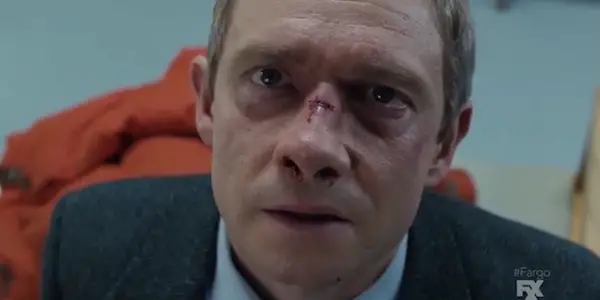
Fargo’s inaugural season was closest to the original film, compared to the subsequent installments. Many of the same character archetypes are reincarnated into new characters in this 2006-set story: Martin Freeman’s meek and cowardly character reminds us of William H. Macy’s Jerry Lundegaard, a straight-laced salesman who makes an uncharacteristic criminal turn. And it’s difficult to top Frances McDormand in her iconic role as Marge Gunderson, but Allison Tolman holds her own in creating her own morally pure and determined small town cop. Like the film, the show creates an aesthetic built on the cold bleakness of Minnesota.
Our antagonist comes in the form of Lorne Malvo (Billy Bob Thornton), who most resembles Javier Bardem’s famous character from No Country for Old Men, Anton Chigurh. Like Chigurh, Malvo is a hitman with a chilling and unnerving presence. Efficient and effective at his job, Malvo also appears to have some set of morals. But there is a Devil-like quality to this twisted character, as he plays with or tempts characters such as Freeman’s Lester Nygaard.
With Malvo, Noah Hawley taps into one of the Coen brothers‘ narrative devices: an almost inhuman force of evil that looms over our protagonists. Whether it’s Chigurh, Sheriff Cooley in O Brother, Where Art Thou?, or The Lone Biker of the Apocalypse in Raising Arizona, this “elemental figure” might as well be the Devil himself (“I haven’t had a piece of pie like that since the Garden of Eden,” Malvo says in one scene).
Hawley’s third cited source for season one of Fargo was A Serious Man, a well-regarded but sometimes overlooked part of the Coens’ filmography. Like A Serious Man, there is a bit of Fargo that acts like a religious parable. In A Serious Man, Larry Gopnik (Michael Stuhlbarg) tries to find clarity and meaning in his difficult life through his Judaism. Similarly, Stavros Milos (Oliver Platt) in Fargo goes through a journey guided by his Christianity. As a bonus wink to the film, we have a scene in the show where deuteragonist Gus Grimly (Colin Hanks) is treated to a parable, which we see through visuals; it much resembles Gopnik’s meeting with his rabbi, where the rabbi tells him the story of “the Goy’s teeth.”
And while not a huge influence as the other three films, there is a little bit of Burn After Reading. It’s Always Sunny in Philadelphia’s Glenn Howerton portrays a dim-witted personal trainer (aptly named “Don Chumph”) with a flawed plan of blackmail, very much like Brad Pitt in Burn After Reading. With characters like Nygaard, Grimly, and Chumph, we examine people who are trying to overextend, be something that they aren’t, and suffer the consequences as a result.
Year 2: Fargo, Miller’s Crossing, and The Man Who Wasn’t There
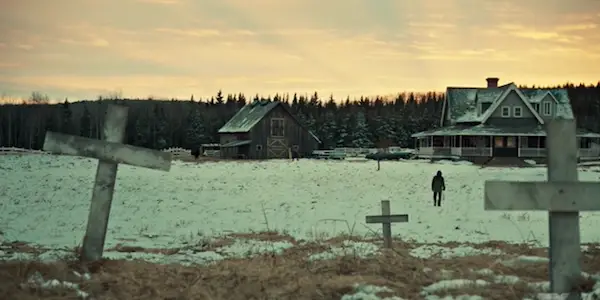
By the time we begin season two of Fargo, we notice a recurring structure. A character gets in over their head, which leads to a crime; the crime leads to another crime, and soon the local police are trying to figure out what the heck is happening. There usually isn’t so much dramatic irony or ambiguity in Fargo; the mystery is for the characters, and the enjoyment of watching the consequences is for the audience. Season two of Fargo knew it had to differentiate itself, not just from the movie, but from the successful first season. By making this story a 1979-set prequel, Fargo had room to grow differently stylistically.
It’s harder to make 1-to-1 comparisons from season two characters to the movie, as this season plays with different personalities. There isn’t a straight villain the same way there was with Lorne Malvo; instead, we have many different factions in a war between two crime syndicates in the Midwest. It’s a premise that resembles Hawley’s stated influence of Miller’s Crossing, a story that similarly features two rival gangs and characters in the crossfire. There’s even a sequence in season two that pays homage to an execution scene in Miller’s Crossing, from the high shot of the trees, down to the usage of “Danny Boy” as background music.
Season two lifted an important element from the Coens‘ neo-noir The Man Who Wasn’t There. Though very different stories, both utilize an alien UFO as a plot device to add a sense of strangeness and mystery. The UFO helps to set season two in its period, with post-Vietnam disillusionment and paranoia. But the UFO also acts as a mystery to both the characters and the audience — an unsolved mystery that we accept will never be solved. And ultimately in life, as Hawley and the Coens might argue, it’s okay that some things will remain a mystery.
Along with the three above films, some of the songs featured in season two are cover versions of the songs as heard in O Brother, Where Art Thou? Nick Offerman’s ranting and paranoid lawyer resembles John Goodman from The Big Lebowski, even having his own intellectual lightweight of a sidekick, to his annoyance. Finally, the key character of Hanzee (Zahn McClarnon) does have an unstoppable elemental force to him, much like Malvo and other Coen characters.
Year 3: A Serious Man, The Big Lebowski, and Inside Llewyn Davis
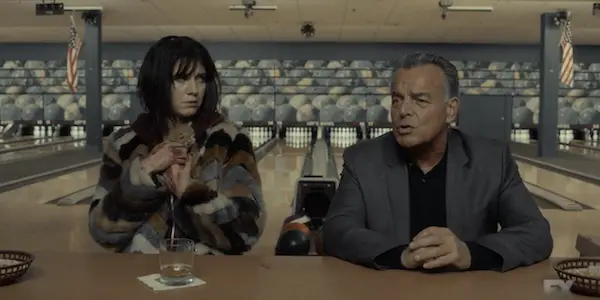
You can tell which Coen brothers’ movies are Hawley’s favorites from the talent he casts. After using The Man Who Wasn’t There’s Billy Bob Thornton for season one, Hawley borrowed Michael Stuhlbarg and Fred Melamed from A Serious Man. What season three took from the 2009 movie differs slightly; this season takes concepts from Judaism much farther than the first season, going as far to include the mythical “Wandering Jew,” played by Ray Wise of Twin Peaks fame.
Like A Serious Man, season three begins with an unconventional scene that seemly has little to do with the actual plot, instead setting up some themes for the upcoming story. In Fargo’s case, we begin with an interrogation scene in Cold War-era East Germany, introducing the primary theme of truth versus story. Remember that Fargo always begins with the sentence “This is a true story,” and this season would dissect the meaning of that phrase.
Meanwhile, the Coen brothers’ cult classic The Big Lebowski has a significant influence on season three. Like Lebowski, cases of mistaken identity leads to trouble. While The Dude (Jeff Bridges) just ends up with a urine-soaked rug, in Fargo’s case an elderly man ends up burgled and killed, just for having a similar name as the intended target. The perpetrator, played by Scoot McNairy, is kind of a darker, crueler version of The Dude, an incompetent slacker, even accidentally flicking his lit joint into his lap, much like The Dude. Also worth mentioning is supporting Lebowski player David Thewlis making an Emmy-nominated villainous turn as antagonist V.M. Varga. Finally, near the end of the show, two characters find refuge in a bowling alley, eerily similar to the bowling alley in Lebowski, down to the neon signs.
With seasons one and two inhabiting the optimism (in the face of violence) of the film, season three was a slightly bleaker affair. Audiences could tell from the distinct color palette: the cinematography resembled that of Inside Llewyn Davis, which was shot by Bruno Delbonnel (Amélie, Harry Potter and the Half-Blood Prince). Like Delbonnel’s previous work, Inside Llewyn Davis (and by proxy, Fargo season three) used dull and muted tones of green and grey, giving this story a darker feel. And like Llewyn Davis, season three bizarrely uses a cat as a narrative device, with the implication that a character has essentially been reincarnated as a kitten.
Additionally, the relationship between Ray (Ewan McGregor) and Nikki (Mary Elizabeth Winstead) is very much like the cop/crimal romance between Nicolas Cage and Holly Hunter in Raising Arizona. In one episode, Chief Gloria Burgle (Carrie Coon) makes a brief excursion to Los Angeles, with imagery invoking Barton Fink, and Burgle even ends up in a diner that appeared in The Big Lebowski.
How to Think Like a Coen Brother
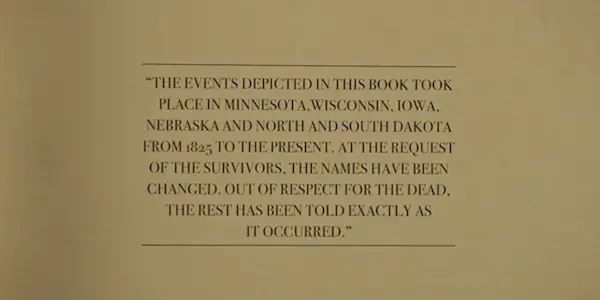
Noah Hawley once said that he imagined the mythology of Fargo as a big history book of true crime in the Midwest, with the film and different seasons as their own chapters in this book. Hawley finally realized this concept in the penultimate episode of season two, opening with a look at such a book. All of the chapters we’ve seen have similar stories, of ambitious people down on their luck trying to prove that they’re something they aren’t, depicting violence in the heart of beautiful American landscapes. This television show, and all of its quirkiness and philosophical musings, acts as an exceptional tribute not just to Fargo the movie, but the entire body of work by the Coen brothers. Hawley is not a mere imitator of Joel and Ethan Coen; instead, he emulates them to tell his own stories, using the Coens’ work as tools in his kit.
The final scene of Burn After Reading can be a summation of many of the Coens‘ stories. After a madcap nonsensical sequence of events, a CIA director (J.K. Simmons) laments, “What did we learn?” His subordinate can only say, “I don’t know.” The director concludes, “I guess we learned not to do it again,” despite not understanding what they did in the first place. It’s an ending that perfectly encapsulates the idea of futility that is so prevalent in the Fargo show. Crazy happenings occur for no particular reason, and everyone is left confused by the end of it all. Season two references the myth of Sisyphus, the king punished to roll a giant boulder up a hill, despite its tendency of rolling back down and hitting him. But Sisyphus repeats this inane action, despite its futility.
In the world of the Coen brothers, mankind is stuck in a loop, repeating its mistakes in different cycles of life. Why we keep repeating these mistakes may remain a mystery… but as the Coens and Noah Hawley have taught us, sometimes it is okay to invite the mystery.
What are your own thoughts on Noah Hawley’s remix of the Coen brothers’ filmography? Let us know, along with what your favorite Coen brothers movie is!
Does content like this matter to you?
Become a Member and support film journalism. Unlock access to all of Film Inquiry`s great articles. Join a community of like-minded readers who are passionate about cinema - get access to our private members Network, give back to independent filmmakers, and more.
Chris is a 23 year old writer and filmmaker. A graduate of Carnegie Mellon University, he was the Vice President of the university’s Film Club, and attended the Sundance Film Festival in 2015 and 2016. His favorite writer/directors include Paul Thomas Anderson, the Coen Brothers, and Quentin Tarantino. He probably watches too much Marvel stuff. You can find more of his written content, podcasts, and videos on Bad Haircut Productions.





